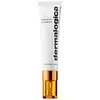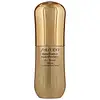What's inside
What's inside
 Key Ingredients
Key Ingredients

 Benefits
Benefits

 Concerns
Concerns

 Ingredients Side-by-side
Ingredients Side-by-side

Water
Skin ConditioningButylene Glycol
HumectantPropanediol
SolventGlycerin
HumectantC15-19 Alkane
SolventSalvia Hispanica Seed Oil
MoisturisingSodium PCA
HumectantTrehalose
HumectantPoria Cocos Polysaccharide
Skin ConditioningPapain
Skin ConditioningDunaliella Salina Extract
Skin ConditioningAminopropyl Ascorbyl Phosphate
AntioxidantTerminalia Arjuna Extract
Skin ConditioningTremella Fuciformis Sporocarp Extract
AntioxidantAscorbyl Methylsilanol Pectinate
AntioxidantPalmitoyl Tripeptide-5
Skin ConditioningSodium Hyaluronate
HumectantPhytosterols
Skin ConditioningAlgin
MaskingCitrus Grandis Peel Oil
MaskingPhytosteryl Oleate
Skin ConditioningTocopherol
AntioxidantSerine
MaskingOleic Acid
EmollientInositol
HumectantHelianthus Annuus Seed Oil
EmollientBetaine
HumectantCarrageenan
Panthenol
Skin ConditioningDipotassium Glycyrrhizate
HumectantMethylpropanediol
SolventProline
Skin ConditioningXylitol
HumectantCalcium Gluconate
HumectantPantolactone
HumectantLecithin
EmollientXanthan Gum
EmulsifyingPentylene Glycol
Skin ConditioningAminomethyl Propanol
BufferingCaprylyl Glycol
EmollientPolyacrylate-13
Acrylates/C10-30 Alkyl Acrylate Crosspolymer
Emulsion StabilisingTetrasodium Glutamate Diacetate
Polyisobutene
Ethylhexylglycerin
Skin ConditioningSodium Benzoate
MaskingCitric Acid
BufferingGluconolactone
Skin ConditioningPolysorbate 20
EmulsifyingPotassium Sorbate
PreservativeCarbomer
Emulsion Stabilising1,2-Hexanediol
Skin ConditioningSodium Hydroxide
BufferingLimonene
PerfumingPhenoxyethanol
PreservativeWater, Butylene Glycol, Propanediol, Glycerin, C15-19 Alkane, Salvia Hispanica Seed Oil, Sodium PCA, Trehalose, Poria Cocos Polysaccharide, Papain, Dunaliella Salina Extract, Aminopropyl Ascorbyl Phosphate, Terminalia Arjuna Extract, Tremella Fuciformis Sporocarp Extract, Ascorbyl Methylsilanol Pectinate, Palmitoyl Tripeptide-5, Sodium Hyaluronate, Phytosterols, Algin, Citrus Grandis Peel Oil, Phytosteryl Oleate, Tocopherol, Serine, Oleic Acid, Inositol, Helianthus Annuus Seed Oil, Betaine, Carrageenan, Panthenol, Dipotassium Glycyrrhizate, Methylpropanediol, Proline, Xylitol, Calcium Gluconate, Pantolactone, Lecithin, Xanthan Gum, Pentylene Glycol, Aminomethyl Propanol, Caprylyl Glycol, Polyacrylate-13, Acrylates/C10-30 Alkyl Acrylate Crosspolymer, Tetrasodium Glutamate Diacetate, Polyisobutene, Ethylhexylglycerin, Sodium Benzoate, Citric Acid, Gluconolactone, Polysorbate 20, Potassium Sorbate, Carbomer, 1,2-Hexanediol, Sodium Hydroxide, Limonene, Phenoxyethanol
Water
Skin ConditioningButylene Glycol
HumectantGlycerin
HumectantCyclopentasiloxane
EmollientCarnosine
Skin ConditioningAlcohol Denat.
AntimicrobialMyristyl Myristate
EmollientHdi/Trimethylol Hexyllactone Crosspolymer
Paraffinum Liquidum
EmollientBehenyl Alcohol
EmollientStearyl Alcohol
EmollientGlyceryl Stearate Se
EmulsifyingIsodecyl Neopentanoate
EmollientDimethylacrylamide/Sodium Acryloyldimethyltaurate Crosspolymer
Microcrystalline Wax
Emulsion StabilisingPolysorbate 60
EmulsifyingPEG-40 Stearate
EmulsifyingPhenoxyethanol
PreservativeParaffin
PerfumingParfum
MaskingCitric Acid
BufferingSorbitan Tristearate
EmulsifyingErythritol
HumectantTocopheryl Acetate
AntioxidantSilica
AbrasiveXanthan Gum
EmulsifyingTrisodium EDTA
Panthenyl Ethyl Ether
Potassium Ascorbyl Tocopheryl Phosphate
AntioxidantSodium Metaphosphate
BufferingGlucosyl Hesperidin
HumectantCI 77891
Cosmetic ColorantLimonene
PerfumingLinalool
PerfumingCI 77492
Cosmetic ColorantAlpha-Isomethyl Ionone
PerfumingBenzyl Benzoate
AntimicrobialGeraniol
PerfumingCitronellol
PerfumingSodium Acetylated Hyaluronate
HumectantAluminum Hydroxide
EmollientBHT
AntioxidantWater, Butylene Glycol, Glycerin, Cyclopentasiloxane, Carnosine, Alcohol Denat., Myristyl Myristate, Hdi/Trimethylol Hexyllactone Crosspolymer, Paraffinum Liquidum, Behenyl Alcohol, Stearyl Alcohol, Glyceryl Stearate Se, Isodecyl Neopentanoate, Dimethylacrylamide/Sodium Acryloyldimethyltaurate Crosspolymer, Microcrystalline Wax, Polysorbate 60, PEG-40 Stearate, Phenoxyethanol, Paraffin, Parfum, Citric Acid, Sorbitan Tristearate, Erythritol, Tocopheryl Acetate, Silica, Xanthan Gum, Trisodium EDTA, Panthenyl Ethyl Ether, Potassium Ascorbyl Tocopheryl Phosphate, Sodium Metaphosphate, Glucosyl Hesperidin, CI 77891, Limonene, Linalool, CI 77492, Alpha-Isomethyl Ionone, Benzyl Benzoate, Geraniol, Citronellol, Sodium Acetylated Hyaluronate, Aluminum Hydroxide, BHT
Ingredients Explained
These ingredients are found in both products.
Ingredients higher up in an ingredient list are typically present in a larger amount.
Butylene Glycol (or BG) is used within cosmetic products for a few different reasons:
Overall, Butylene Glycol is a safe and well-rounded ingredient that works well with other ingredients.
Though this ingredient works well with most skin types, some people with sensitive skin may experience a reaction such as allergic rashes, closed comedones, or itchiness.
Learn more about Butylene GlycolCitric Acid is an alpha hydroxy acid (AHA) naturally found in citrus fruits like oranges, lemons, and limes.
Like other AHAs, citric acid can exfoliate skin by breaking down the bonds that hold dead skin cells together. This helps reveal smoother and brighter skin underneath.
However, this exfoliating effect only happens at high concentrations (20%) which can be hard to find in cosmetic products.
Due to this, citric acid is usually included in small amounts as a pH adjuster. This helps keep products slightly more acidic and compatible with skin's natural pH.
In skincare formulas, citric acid can:
While it can provide some skin benefits, research shows lactic acid and glycolic acid are generally more effective and less irritating exfoliants.
Most citric acid used in skincare today is made by fermenting sugars (usually from molasses). This synthetic version is identical to the natural citrus form but easier to stabilize and use in formulations.
Read more about some other popular AHA's here:
Learn more about Citric AcidGlycerin is already naturally found in your skin. It helps moisturize and protect your skin.
A study from 2016 found glycerin to be more effective as a humectant than AHAs and hyaluronic acid.
As a humectant, it helps the skin stay hydrated by pulling moisture to your skin. The low molecular weight of glycerin allows it to pull moisture into the deeper layers of your skin.
Hydrated skin improves your skin barrier; Your skin barrier helps protect against irritants and bacteria.
Glycerin has also been found to have antimicrobial and antiviral properties. Due to these properties, glycerin is often used in wound and burn treatments.
In cosmetics, glycerin is usually derived from plants such as soybean or palm. However, it can also be sourced from animals, such as tallow or animal fat.
This ingredient is organic, colorless, odorless, and non-toxic.
Glycerin is the name for this ingredient in American English. British English uses Glycerol/Glycerine.
Learn more about GlycerinLimonene is a fragrance that adds scent and taste to a formulation.
It's found in the peel oil of citrus fruits and other plants such as lavender and eucalyptus. The scent of limonene is generally described as "sweet citrus".
Limonene acts as an antioxidant, meaning it helps neutralize free radicals.
When exposed to air, oxidized limonene may sensitize the skin. Because of this, limonene is often avoided by people with sensitive skin.
The term 'fragrance' is not regulated in many countries. In many cases, it is up to the brand to define this term. For instance, many brands choose to label themselves as "fragrance-free" because they are not using synthetic fragrances. However, their products may still contain ingredients such as essential oils that are considered a fragrance.
Learn more about LimonenePhenoxyethanol is a preservative that has germicide, antimicrobial, and aromatic properties. Studies show that phenoxyethanol can prevent microbial growth. By itself, it has a scent that is similar to that of a rose.
It's often used in formulations along with Caprylyl Glycol to preserve the shelf life of products.
Water. It's the most common cosmetic ingredient of all. You'll usually see it at the top of ingredient lists, meaning that it makes up the largest part of the product.
So why is it so popular? Water most often acts as a solvent - this means that it helps dissolve other ingredients into the formulation.
You'll also recognize water as that liquid we all need to stay alive. If you see this, drink a glass of water. Stay hydrated!
Learn more about WaterXanthan gum is used as a stabilizer and thickener within cosmetic products. It helps give products a sticky, thick feeling - preventing them from being too runny.
On the technical side of things, xanthan gum is a polysaccharide - a combination consisting of multiple sugar molecules bonded together.
Xanthan gum is a pretty common and great ingredient. It is a natural, non-toxic, non-irritating ingredient that is also commonly used in food products.
Learn more about Xanthan Gum